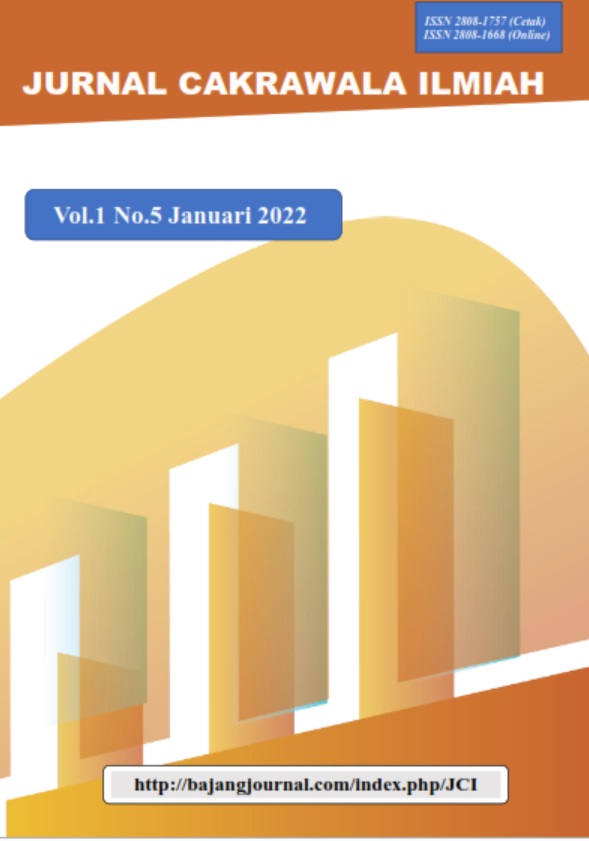Hybrid Assistive Limb Pada Pasien Post Total Hip/Knee Arthroplasty : Literature review
DOI:
https://doi.org/10.53625/jcijurnalcakrawalailmiah.v1i5.1151Keywords:
Knee Arthroplasty, Hip Arthroplasty, Hybrid Assistive Limb, rehabilitationAbstract
Pendahuluan: Osteoartritis dengan nyeri, masalah pada aktivitas sehari-hari, penurunan kualitas hidup, dan keterbatasan gerak menjadi indikasi dilakukan tindakan Total Hip Arthroplasty (THA) maupun Total Knee Arthroplasty (TKA). Namun, pasien sementara akan mengalami penurunan kemampuan berjalan, penurunan kekuatan otot, penurunan rentang gerak lutut (ROM), dan nyeri pasca-operasi. Penanganan dengan rehabilitasi pada periode awal operasi penting untuk memaksimalkan hasil operasi. Hybrid Assistive Limb (HAL) atau Honda Walking Assistive (HWA) merupakan teknologi robotik yang digunakan dalam rehabilitasi pasien pasca-THA maupun TKA. Tujuan: Literature review bertujuan untuk membandingkan kekuatan otot, kemampuan berjalan dan nyeri antara rehabilitasi menggunakan robotik Hybrid Assistive Limb (HAL) atau Honda Walking Assistive (HWA) dengan rehabilitasi konvensional. Metode: Metode yang digunakan dalam penelitian ini adalah Literature Review melalui online database, yaitu: PubMed, Scopus, EBSCOhost, ProQuest, dan Google Scholar dengan menggunakan kata kunci (Knee Arthroplasty* OR Hip Arthroplasty*) AND (Hybrid assistive limb) AND (Conventional rehabilitation) AND (muscle strength OR walking ability OR pain) sehingga ditemukan 7 artikel yang sesuai dengan kriteria. Hasil: Penggunaan HAL atau HWA aman, layak, dan efektif meningkatkan kemampuan berjalan, meningkatkan kekuatan otot, dan meningkatkan ROM tanpa menyebabkan peningkatan rasa sakit saat dilakukan rehabilitasi. Rekomendasi: Rehabilitasi berbasis robotik dapat menjadi modalitas rehabilitasi pasca-THA maupun TKA untuk mencapai efektivitas rehabilitasi secara maksimal dengan mengembangkan protokol yang efektif dan efisien.
References
Goto, K., Morishita, T., Kamada, S., Saita, K., Fukuda, H., Shiota, E., Sankai, Y., & Inoue, T. (2017). Feasibility of rehabilitation using the single-joint hybrid assistive limb to facilitate early recovery following total knee arthroplasty: A pilot study. Assistive Technology, 29(4), 197–201. https://doi.org/10.1080/10400435.2016.1219883
Kazubski, K., Tomczyk, Ł., Kopczyński, B., & Morasiewicz, P. (2021). The epidemiology of hip and knee primary and revision arthroplasties during the COVID-19 pandemic. Healthcare (Switzerland), 9(5), 1–8. https://doi.org/10.3390/healthcare9050519
Koseki, K., Mutsuzaki, H., Yoshikawa, K., & ... (2020). Gait Training Using a Hip-Wearable Robotic Exoskeleton After Total Knee Arthroplasty: A Case Report. … & Rehabilitation. https://doi.org/10.1177/2151459320966483
Koseki, K., Mutsuzaki, H., Yoshikawa, K., & ... (2021). Early Recovery of Walking Ability in Patients After Total Knee Arthroplasty Using a Hip-Wearable Exoskeleton Robot: A Case-Controlled Clinical Trial. … & Rehabilitation. https://doi.org/10.1177/21514593211027675
Koseki, K., Mutsuzaki, H., Yoshikawa, K., Endo, Y., & ... (2019). Gait training using the Honda Walking Assistive Device® in a patient who underwent total hip arthroplasty: a single-subject study. Medicina. https://www.mdpi.com/428066
Kotani, N., Morishita, T., Saita, K., Kamada, S., Maeyama, A., Abe, H., Yamamoto, T., Shiota, E., & Inoue, T. (2020). Feasibility of supplemental robot-assisted knee flexion exercise following total knee arthroplasty. Journal of Back and Musculoskeletal Rehabilitation, 33(3), 413–421. https://doi.org/10.3233/BMR-181482
Tanaka, Y., Oka, H., Nakayama, S., Ueno, T., Matsudaira, K., Miura, T., Tanaka, K., & Tanaka, S. (2017). Improvement of walking ability during postoperative rehabilitation with the hybrid assistive limb after total knee arthroplasty: A randomized controlled study. 5. https://doi.org/10.1177/2050312117712888
Yoshikawa, K., Mutsuzaki, H., Sano, A., Koseki, K., Fukaya, T., Mizukami, M., & Yamazaki, M. (2018). Training with Hybrid Assistive Limb for walking function after total knee arthroplasty. Journal of Orthopaedic Surgery and Research, 13(1). https://doi.org/10.1186/S13018-018-0875-1
Yoshioka, T, Sugaya, H., Kubota, S., Onishi, M., & ... (2016). Knee-extension training with a single-joint hybrid assistive limb during the early postoperative period after total knee arthroplasty in a patient with osteoarthritis. In Case reports in …. hindawi.com. https://www.hindawi.com/journals/crior/2016/9610745/
Yoshioka, Tomokazu, Kubota, S., Sugaya, H., Arai, N., Hyodo, K., Kanamori, A., & Yamazaki, M. (2021). Feasibility and efficacy of knee extension training using a single-joint hybrid assistive limb, versus conventional rehabilitation during the early postoperative period after total knee arthroplasty. Journal of Rural Medicine, 16(1), 22–28. https://doi.org/10.2185/JRM.2020-024
Yoshioka, Tomokazu, Sugaya, H., Kubota, S., Onishi, M., Kanamori, A., Sankai, Y., & Yamazaki, M. (2016). Knee-Extension Training with a Single-Joint Hybrid Assistive Limb during the Early Postoperative Period after Total Knee Arthroplasty in a Patient with Osteoarthritis. Case Reports in Orthopedics, 2016. https://doi.org/http://dx.doi.org/10.1155/2016/9610745
















